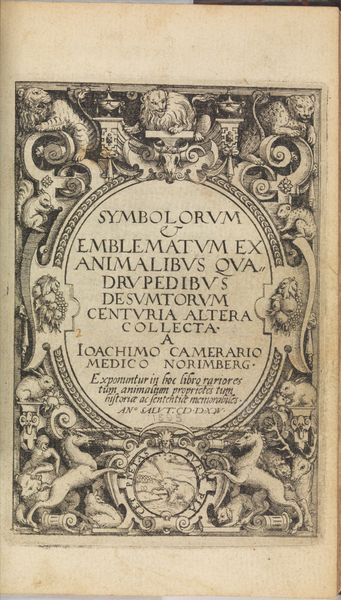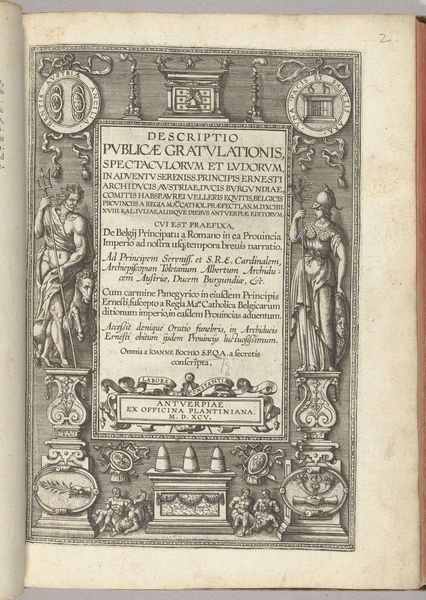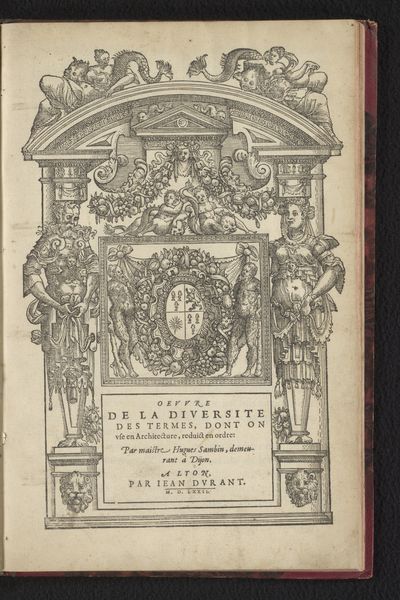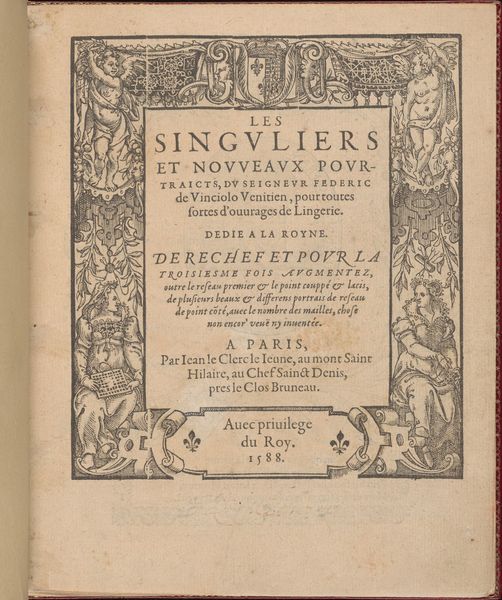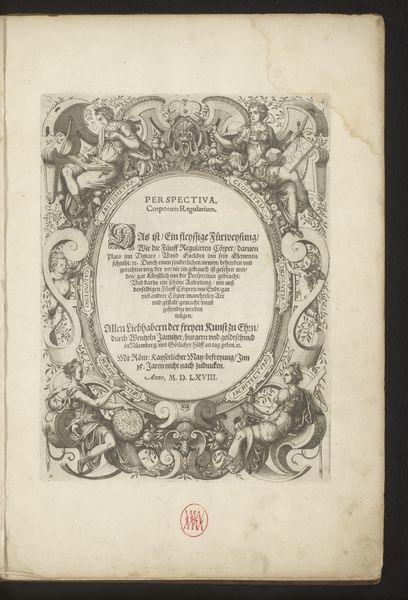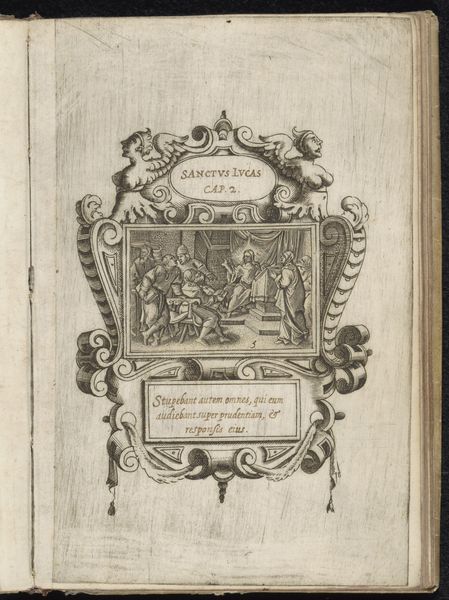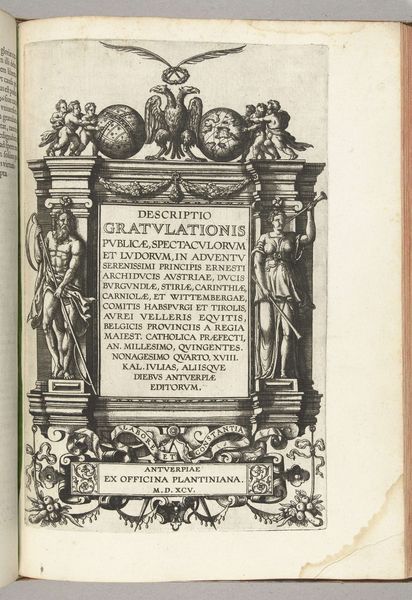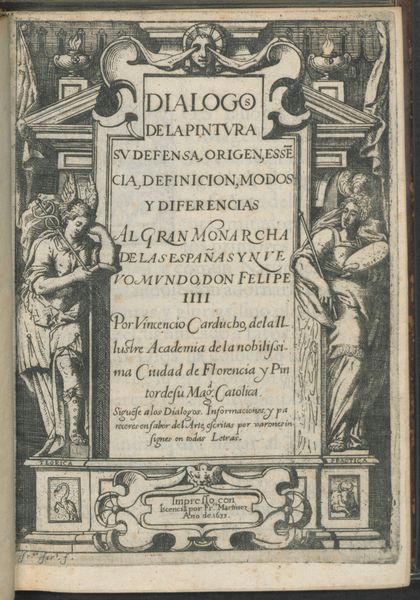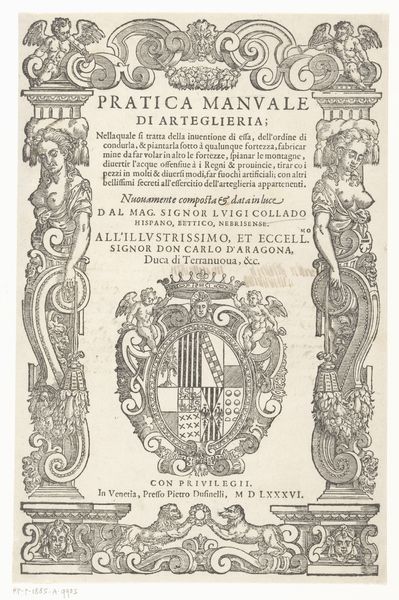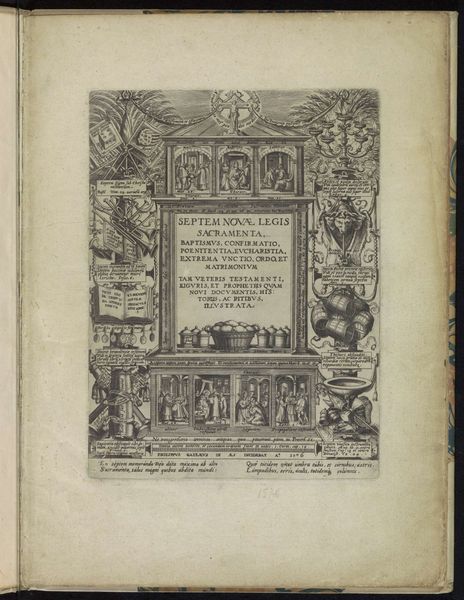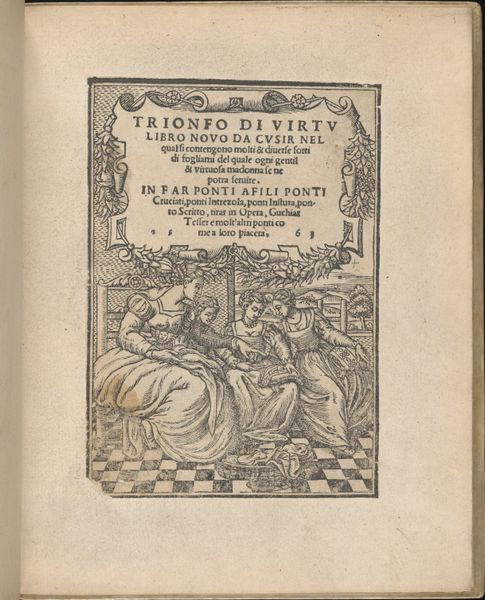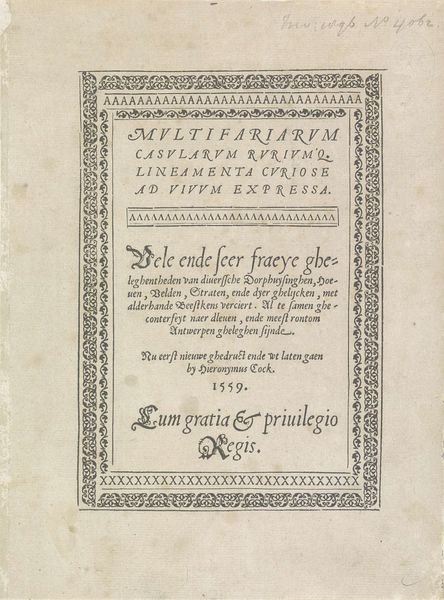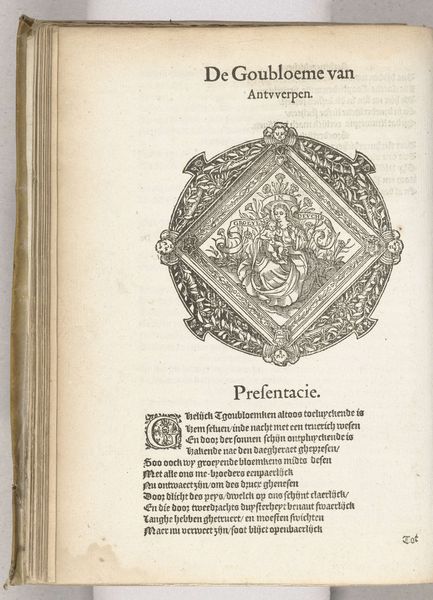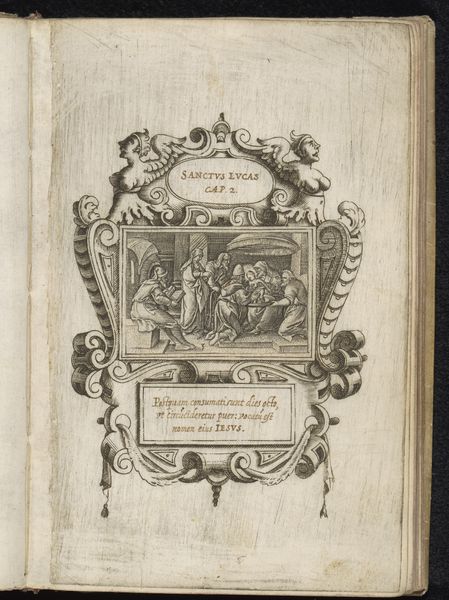
drawing, print, paper, typography, engraving
#
drawing
#
baroque
# print
#
book
#
old engraving style
#
paper
#
typography
#
decorative-art
#
engraving
Dimensions: Overall: 9 1/4 x 7 1/16 in. (23.5 x 18 cm)
Copyright: Public Domain
Curator: Look at the density of detail in this engraving. This is Matthias Mignerak’s "La Pratique de l'Aiguille," published in 1605. It resides now at the Metropolitan Museum of Art. Editor: It feels so controlled and almost suffocating. The symmetry, the figures weighed down by ornamentation…it’s a baroque overload! Curator: It's a title page, and that ornamentation served a very specific purpose: signaling the prestige and importance of the needlework patterns within. The materiality of this book, the quality of the paper and the intricacy of the engraving, also functioned to enhance the status of needlework as more than mere craft. Editor: Yes, look at the dedication "To the Most Christian Queen of France and Navarre.” What could embroidery patterns mean for royal power in France? Curator: Beyond the book’s dedication, this engraving contains not only information about needlework design and construction, but is a physical object circulated and consumed amongst court society, expanding interest and contributing to a broader trend of valuing domestic art practice as feminine cultural capital. Editor: Note that "Milour Mignerak Anglois" presents himself as both an artisan *and* a gentleman through the use of "Milour", placing him in the orbit of the French royal court at the turn of the century. This carefully curated visual reinforces the book’s elevated status. It wasn't simply a manual, but an emblem of cultural aspiration. Curator: Exactly! And that blend of skill and refinement, printed so precisely on paper using typography to circulate instructions is also key, as printed and copied labor were transforming the landscape of artistic practice in the seventeenth century. Editor: Thinking about the labour behind it—the engraver, the publisher, the needleworkers who used it, adds so much to this piece of paper. Thanks for sharing it, I’ll definitely think about how it circulated at court and what power was in practice there. Curator: Indeed, and considering the patterns as another form of labor really changes my own initial reaction to the artwork.
Comments
No comments
Be the first to comment and join the conversation on the ultimate creative platform.
